Illustrations by Vittorio Zonca (1607) from
'Novo Teatro di Machine et Edificii'
'Novo Teatro di Machine et Edificii'

A perpetual water-raising system
"Zonca shows a large copperplate engraving of a huge pipe for raising water. It had a large, sealed inverted U-tube with larger diameter on one side. The figure shows the larger tube (A) on the left emptying water at a higher level than the water intake on the right. This water then powered a horizontal turbine at the bottom, which drives a millwheel for grinding grain. The sealed port at the top was to facilitate the initial filling of the tube with water.
For want of a better name, I call this a "perverted siphon", though it doesn't work as a siphon*. (It's so hard to name devices that don't work.) Didn't folks in the 17th century know that siphons can only lift water over an elevation if the output tube's opening is lower than the input water level? Perhaps not. Roman engineers had successfully used water tubes or pipes to transport water over hills, but the output was always lower than the input water level. These tubes were a last resort for engineers, for the apex of the tube could not be higher than 10 meters above the water level at the input end. It was difficult to seal the tubes so that air would not seep into the top of the tube and eventually form an air pocket that destroyed the continuity of the water and halted water flow. Perhaps some felt that it was only such practical "engineering difficulties" that prevented the use of siphons to actually deliver water to a higher level.
Remember that the role of atmospheric pressure in these devices wasn't understood. So why did the water stay in the inverted U-tube? This was explained by Aristotle's principle that "nature abhors a vacuum", that is, nature will not allow a vacuum in the top of the tube and will do whatever necessary to prevent it. This explained why a suction pump could lift a column of water (but didn't explain why it could only lift water about 33 feet)." [cont]. {see also}
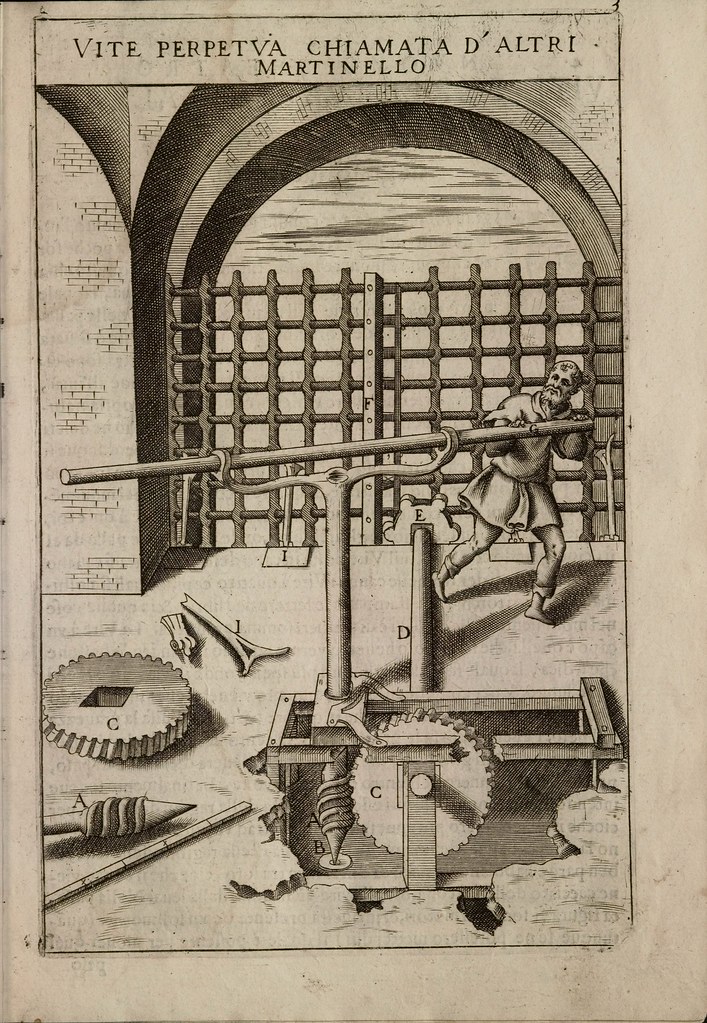
Schematics of perpetual screw
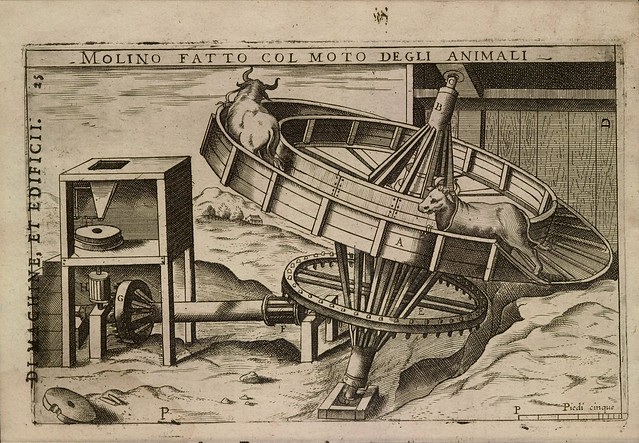
Mill powered by animals
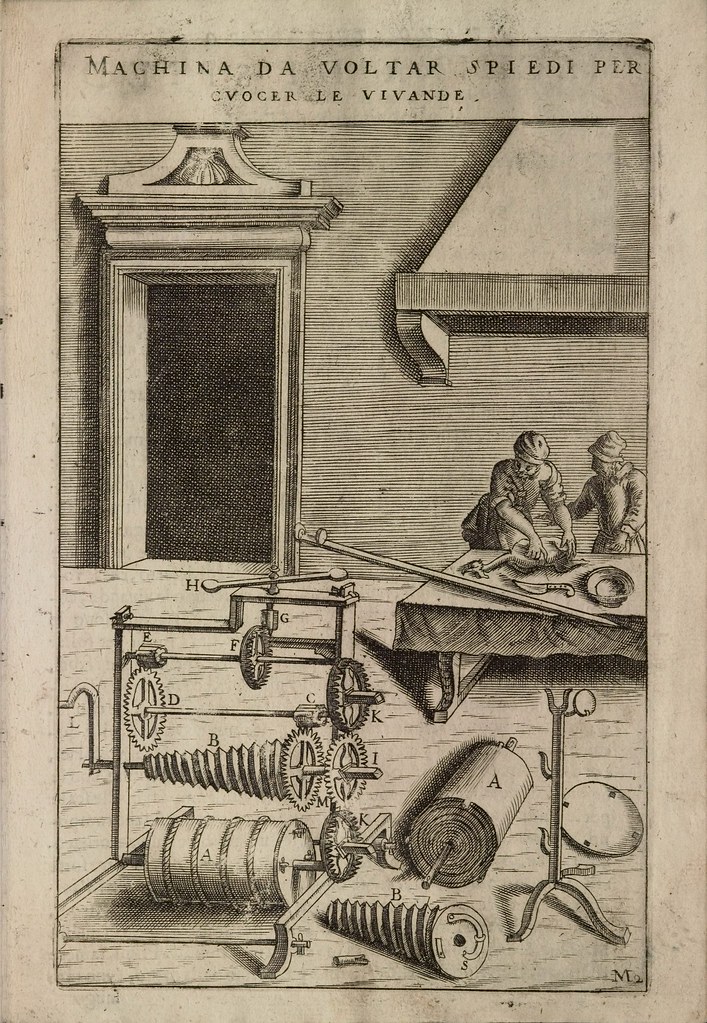
Gears, ratchets and turning mechanisms for a meat rotisserie
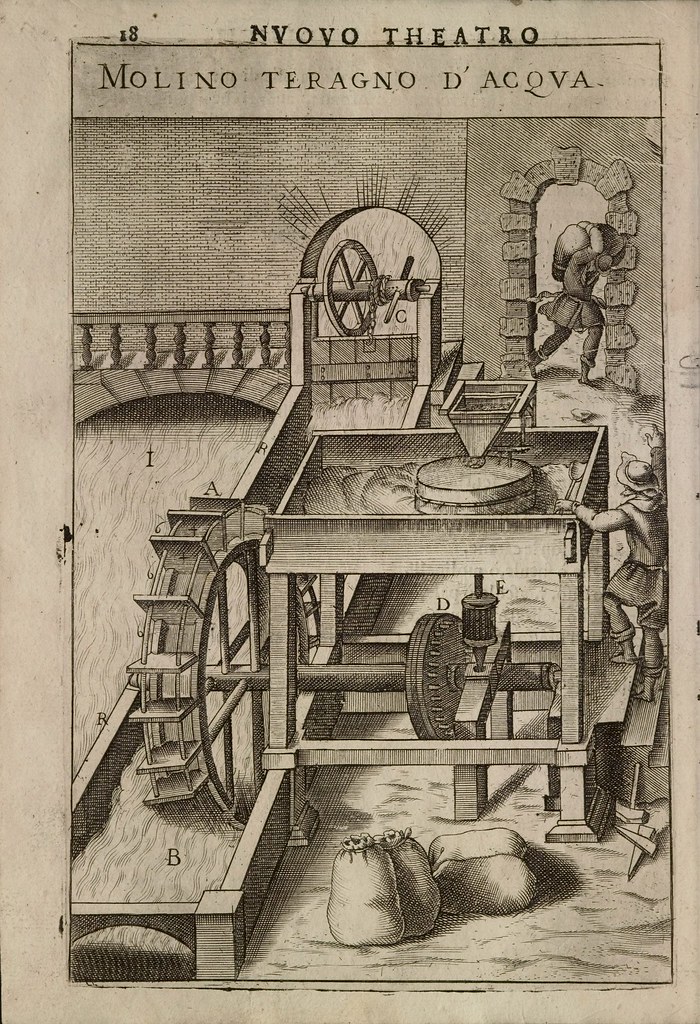
Water-mill (for flour or ..?)
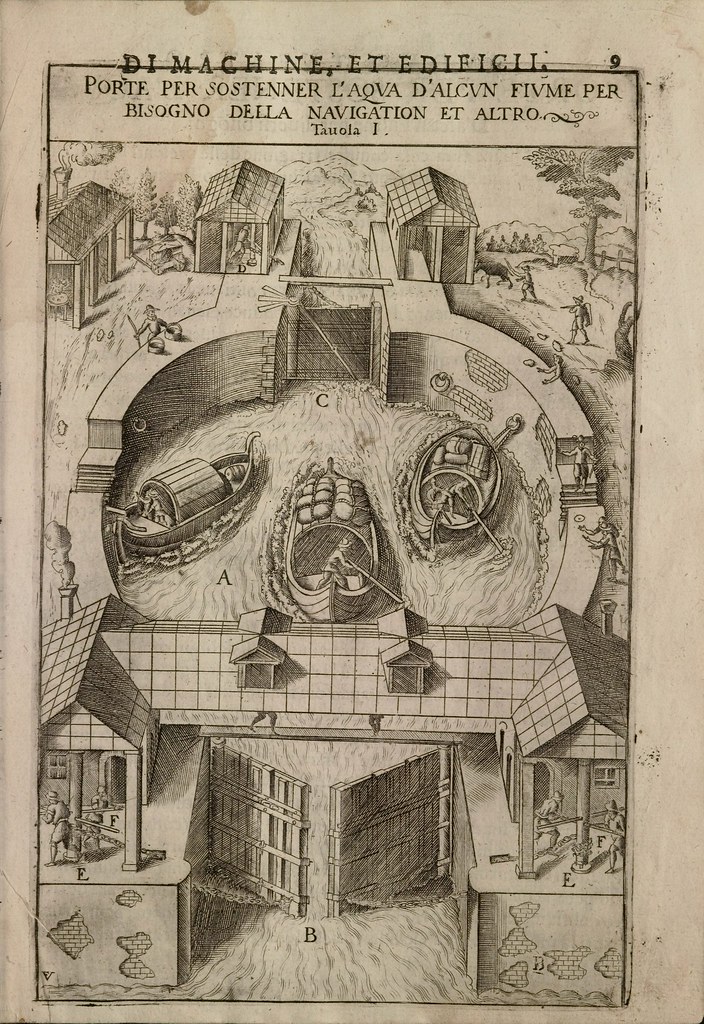
Mitre gates on a navigational river or canal lock
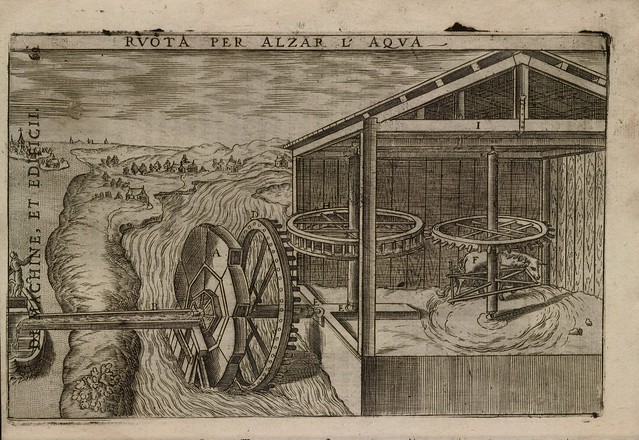
Water raising system (dual power)
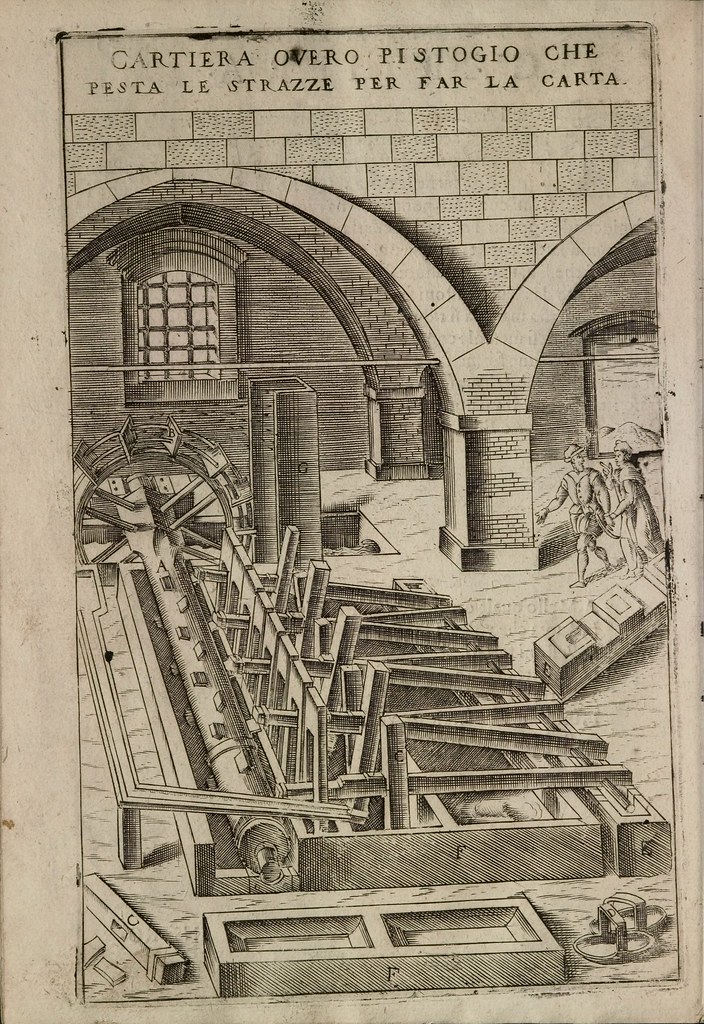
A waterwheel stamping mill - for crushing pulp in paper making
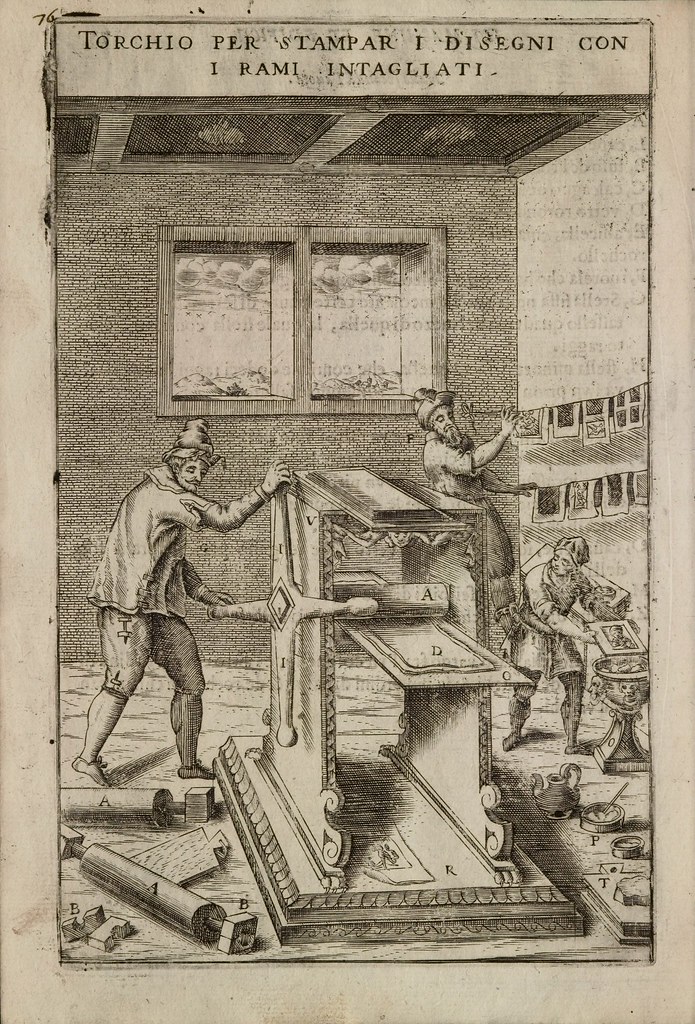
Intaglio-plate {illustration} printing press
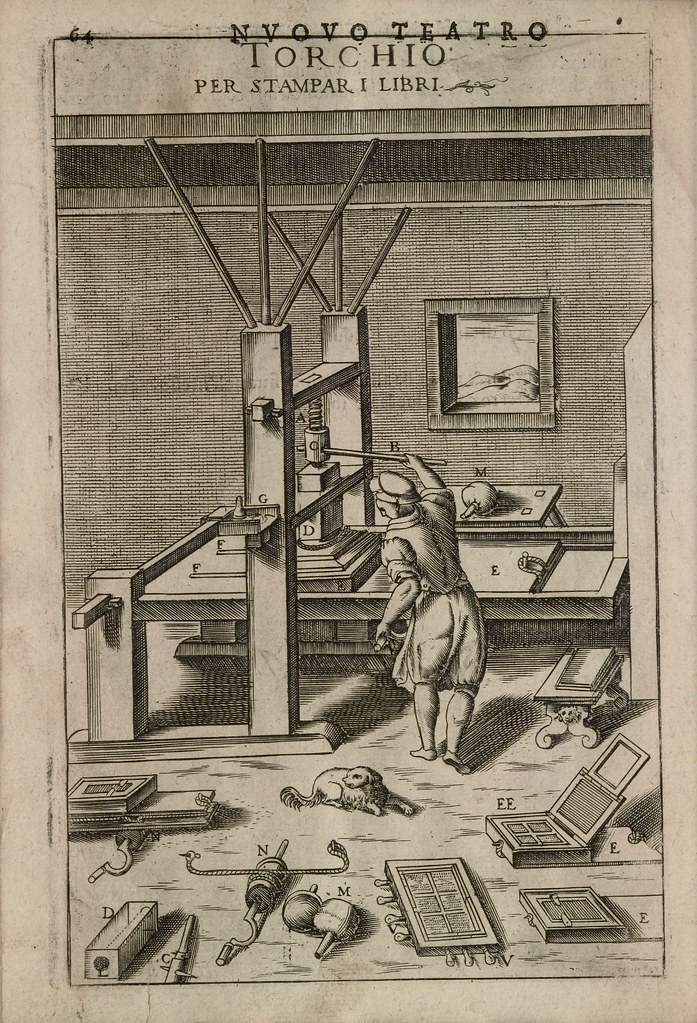
Book printing press
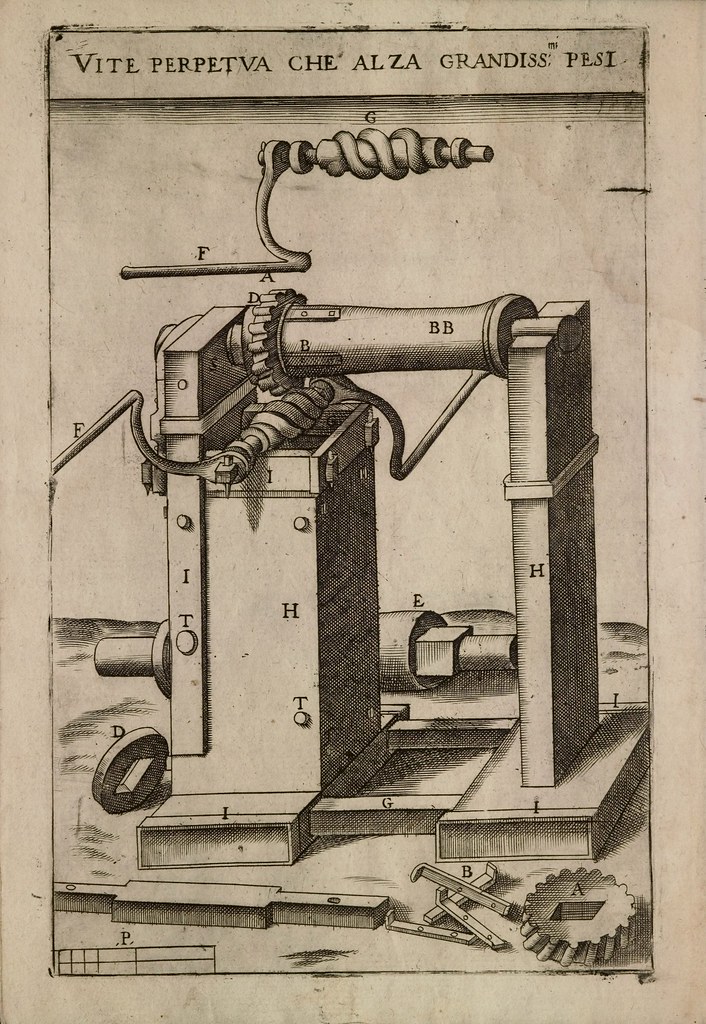
Perpetual screw for raising heavy weights
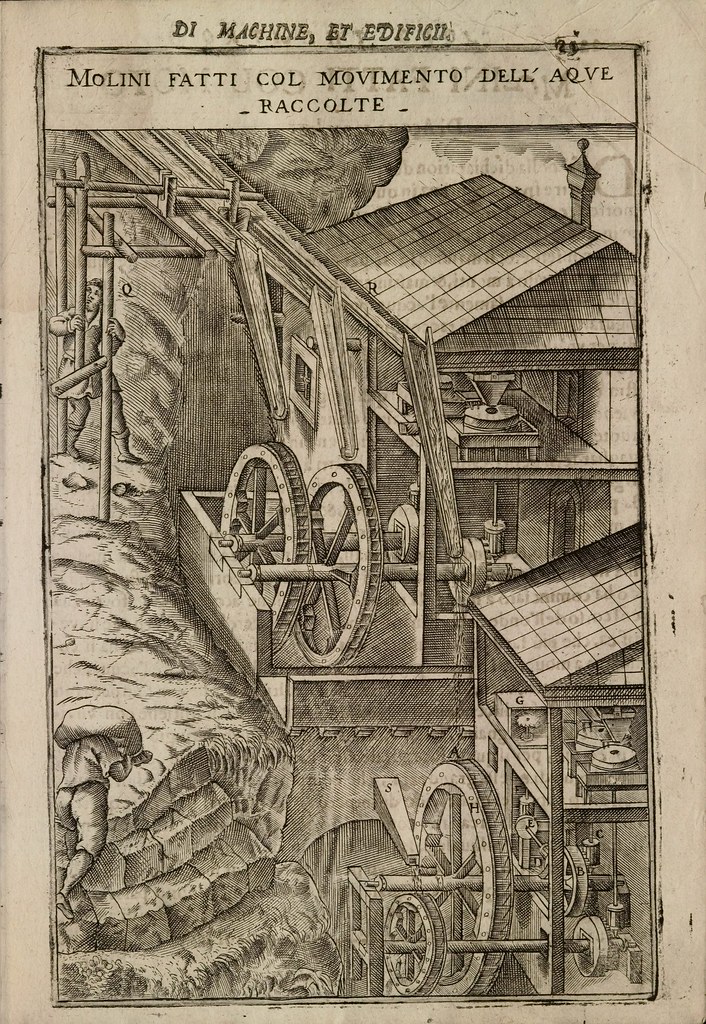
Multi-wheel watermill

Cross-section of machine/pumping system to raise water to a "great height"
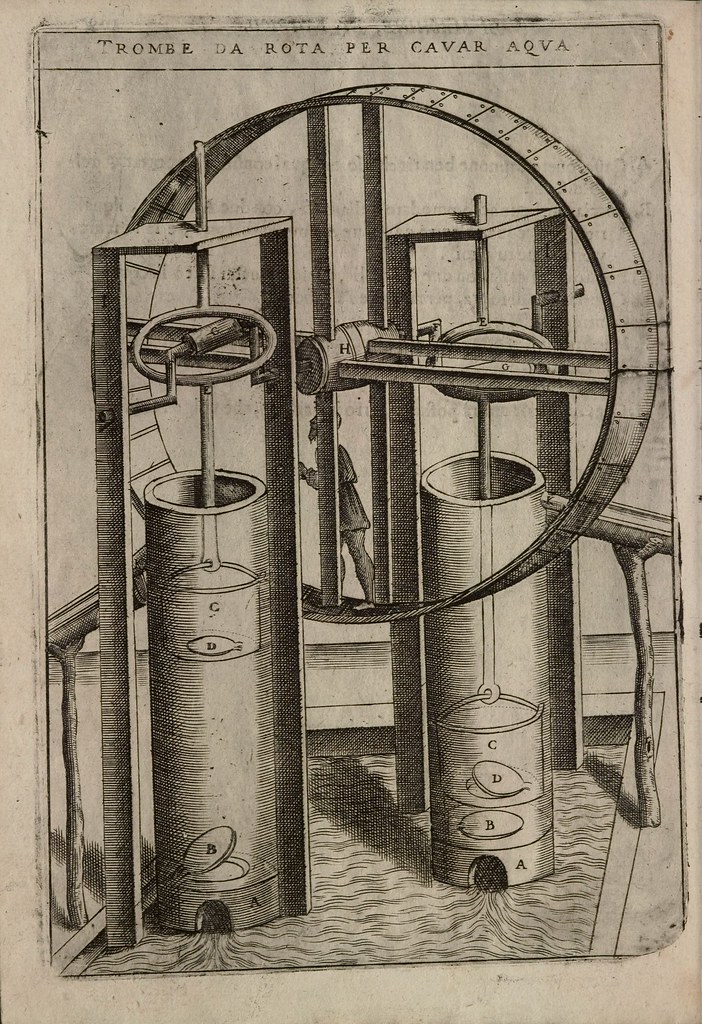
Human-powered water pumping system
As the few online references to Vittorio Zonca (1568-1602) attest, little is known about the Italian architect's life beyond the fact that he lived in Padua and wrote an illustrated technical manual on machines.
Zonca's book -- part of the Renaissance/Early Modern genre known as The Theatre of Machines -- wasn't released until four years after his death, and the illustrations seen above are from the 3rd edition, published in 1656.
In 'Novo Teatro di Machine and Edificii', Zonca presents more than forty engravings that illustrate a wide variety of machines, including presses, grinders, locks, pumps, lathes, weight lifting, load bearing and even water-powered silk throwing systems.
The source for many of Zonca’s designs is believed to be a manuscript by the Sienese painter Francesco di Giorgio Martini (1439-1501), which depicts various 15th c. machines.
Zonca's work was nevertheless important and original because it came closest, among contemporaries in the emerging field of technical manuals, to showing how the mechanical systems would function in the real world. Zonca pared down overly elaborate gear/pulley/lever systems (in which friction would hamper machine operation) and he drew the components mostly to scale, as compared to Ramelli for instance. In other words, Zonca's manual was more practical than (merely) theoretical. References in his book infer that working examples of some of Zonca's machines were successfully built during his lifetime.
In the 1620s, a collection of European machine designs by Zonca, Ramelli and Besson was published in China by the Jesuit scholar, Johann Schreck. The illustrations were produced in a Chinese pictorial style and were the first European technological systems seen in the Far East.
In the 1620s, a collection of European machine designs by Zonca, Ramelli and Besson was published in China by the Jesuit scholar, Johann Schreck. The illustrations were produced in a Chinese pictorial style and were the first European technological systems seen in the Far East.
- 'Novo Teatro di Machine et Edificii' by Vittorio Zonca is available via the European Cultural Heritage Online (ECHO) portal at the Max Planck Institute for the History of Science.
- The book is also available via Cornell University's Kinematic Models for Design Digital Library.
- Istituto Internazionale di Storia economica "F. Datini" has titled illustrations from Zonca's book (in Italian) -- the 1621 edition (some of these *might* be different from the series published in 1656 and 1607)
- New Technology of 1607 at Princeton's Graphic Arts blog.
- Zonca bio: Kmoddl :: Wikipedia.
- Perpetual Futility from the Museum of Unworkable Devices.
- Mentions of Vittorio Zonca at Amazon and Googlebooks.
- Previously on BibliOdyssey: machines (which includes posts on all the main players involved in the Renaissance-era Theatre of Machines; for instance: Early Machine Technology.
- BibliOdyssey on Twitter.




No comments:
Post a Comment